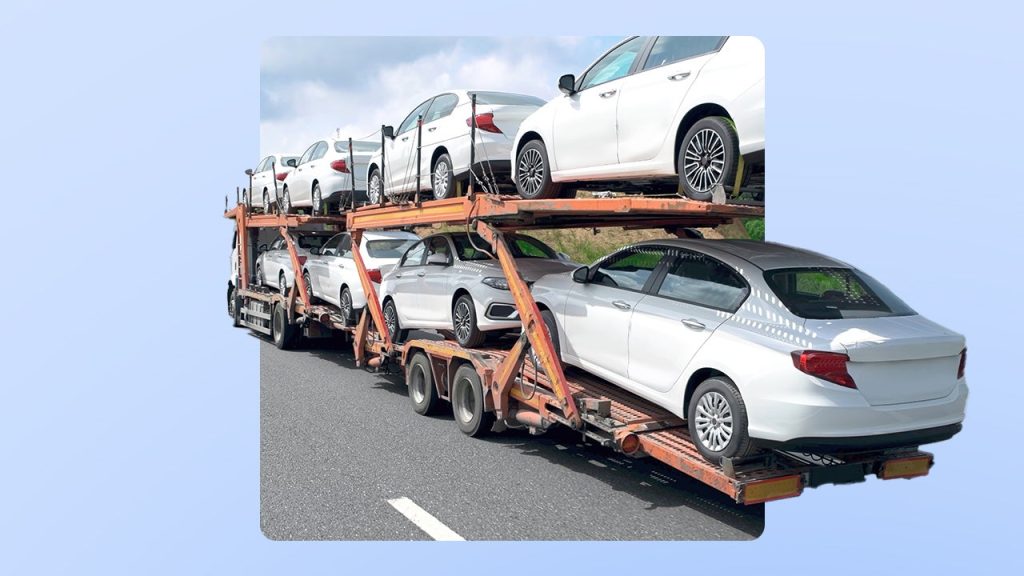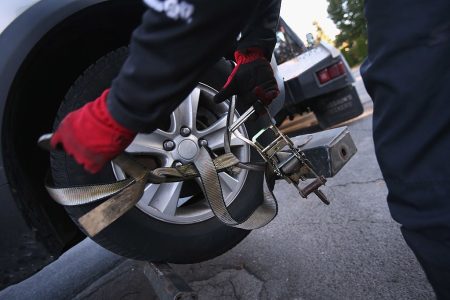On March 26, 2025, President Trump announced a new 25 percent tariff on imported cars and car parts, which took effect on May 3, 2025. Just a month after the original announcement, a follow-up executive order introduced adjustments that offer potential discounts to companies manufacturing vehicles within the U.S. The intent is clear: make foreign cars more expensive to encourage domestic car production. But whether this strategy will boost local manufacturing — or simply drive up costs for consumers and automakers — is still uncertain.
With prices likely to rise, many consumers are weighing a tough question — should they buy a car now, or wait and risk paying even more later?
The instinct to act quickly is understandable — but major financial decisions deserve more than a fear-based reaction. Tariff policies can change quickly, as we’ve already seen. And while you can’t control policy shifts, you can control how you manage your money.
Let’s walk through why buying a car right now could end up costing you more, when it makes sense to buy now, what financial questions you should ask yourself and how to prepare if you do decide to move forward with purchasing a car.
Why rushing into a car purchase could backfire
Buying a car isn’t just about the purchase price. It’s also about the long-term costs — maintenance, auto insurance, gas and repairs. Just like you wouldn’t rush to buy a house if mortgage rates were rising, it’s important not to rush a car purchase simply because of tariff policy changes.
Strong emotions, like fear, urgency or anxiety, can cloud judgment. Acting from that space may lead to financial strain or regret later.
Bankrate’s take:
Instead, pause and look at your full financial picture. Look ahead to what ownership will demand over time. When you take the time to assess your situation from a calm, data-informed place, you give yourself the best chance at making a decision that supports your longer-term financial wellness.
When it makes sense to buy now
While it’s wise to avoid panic-buying, there are valid reasons why buying a car now could be the right financial move — regardless of tariffs. If you fall into any of the categories outlined, prioritizing a car purchase may actually protect your financial stability in the long run.
You currently lack reliable transportation
If your car is experiencing frequent breakdowns, has very high mileage or requires continual repairs that are becoming increasingly expensive, it’s time to start planning for a replacement.
Dependable transportation is a foundational need — for work, caregiving or school access. This is especially true in neighborhoods that don’t have reliable public transportation.
You’ve already been planning to buy a car — and you’re financially ready
If buying a car was already part of your 2025 plan, and you’ve been preparing for the expenses, the tariffs may simply accelerate your timeline — not derail you completely.
You love cars — and have the means to proceed thoughtfully
If cars are your joy, and you’re saving, investing for retirement and have a debt payoff plan, go for it — with intention, not impulse.
Bankrate’s take:
The key to all these scenarios is preparation. When your decision is driven by your actual needs and financial readiness — not just fear of rising prices — you’re far more likely to make a purchase that supports your long-term goals.
Key financial questions to ask before buying
Before you decide whether now is the right time to purchase a car — tariffs or not — it’s essential to ask yourself some foundation financial questions. These questions will help ensure that your decision supports both your short-term needs and your longer-term financial wellness.
Will you still have an emergency fund after purchasing your car?
It may be tempting to dip into your savings to make a down payment on a car or buy it outright. But doing so at the expense of your emergency fund is risky. Ideally, you should have at least one month of expenses saved in a high-yield savings account after any funds are used for your car purchase. Your emergency fund is a key part of your financial safety net — and it should stay intact.
Have you confirmed that you can afford a monthly payment?
If you’re financing your car, it’s crucial to understand the monthly cost based on the auto loan rates you’re offered and the amount you’re borrowing. Use an auto loan calculator to plug in different interest rates and loan terms to get a realistic sense of your payments. This step will help you determine what kind of monthly payment fits comfortably in your monthly budget.
Is your credit score strong enough to secure a low-interest auto loan?
A higher credit score can significantly reduce the interest you’ll pay over the life of a loan. Ideally, your score should be at least 670 before you finance a car. If your score is lower, consider ways to boost it — such as reducing your credit utilization ratio by making extra payments toward high-interest debt — before applying for an auto loan.
Have you budgeted for all new car-related expenses?
The costs of owning a car go beyond the monthly payment. Be sure to account for:
- Registration and title fees
- Insurance premiums
- Fuel costs
- Maintenance and repair costs
You’ll want to adjust your budget accordingly to make room for these recurring expenses. Being proactive now will help you avoid feeling financially stretched later.
Keep in mind
You should get insurance quotes in advance for the specific car you’re considering. Also rework your fuel budget to account for your new car’s average gas mileage.
How to prepare your finances before purchasing
If you’ve decided that buying a car is the right move for you, take these next two steps to ensure that your new car doesn’t become a financial burden down the road.
Build or review your car maintenance sinking fund
Owning a car means being ready for inevitable maintenance costs. Create a dedicated sinking fund in a high-yield savings account for vehicle-related expenses. At minimum, this fund should cover:
- Your car insurance deductible
- A full set of new tires
- A replacement battery
By preparing for these common and costly maintenance expenses now, you’ll avoid the financial stress of scrambling to cover them later. Think of this fund as your financial cushion for the “when,” not “if,” of car maintenance.
Test-drive your future car payment
Before committing to a new monthly payment, simulate it in real life. Once you’ve estimated your expected car payment with the help of a calculator, start automatically transferring that amount into your high-yield savings account each month. This approach allows you to:
- Experience what the new expenses feel like in your budget
- Adjust your spending and saving habits ahead of time
- Accumulate extra funds for your own down payment or maintenance costs
After a few months, not only will you have more savings — but you’ll have real data on how a new car payment fits into your current lifestyle.
Zoom out and think long term
As you weigh the decision to purchase a car, take a moment to zoom out and consider the full financial picture — not just what today’s headlines are highlighting. Even if you move forward with a purchase now, remember that tariffs will likely raise the cost of car parts too, increasing the total cost of ownership over time.
If your expenses are going to increase either way, make sure those increases are intentional and well-planned — not the result of fear or urgency. Rushing into a purchase without a solid financial strategy can lead to unnecessary strain later.
Slow down. Zoom out. And trust that choosing from an emotionally neutral, informed place is always a better investment in your long-term financial wellness than reacting to short-term market shifts.
Read the full article here









